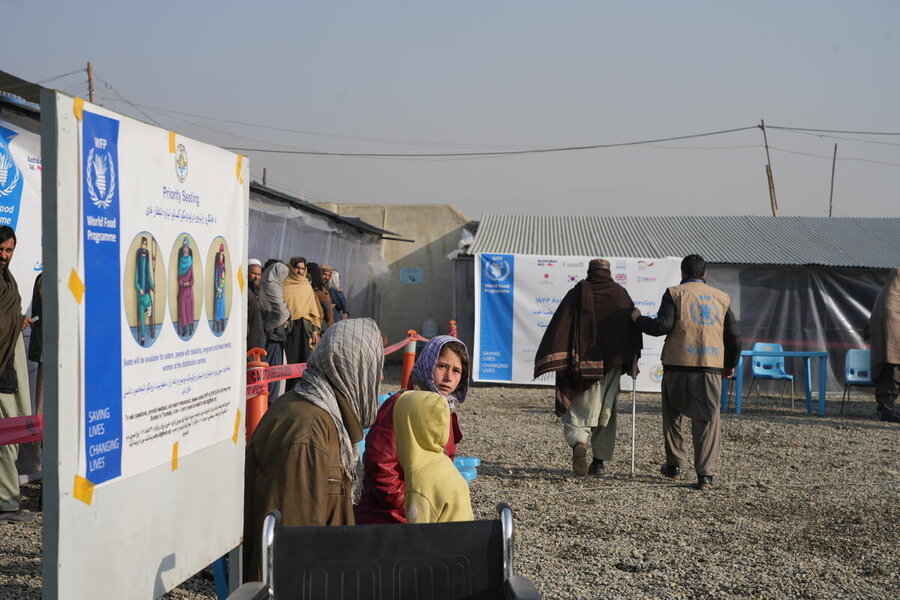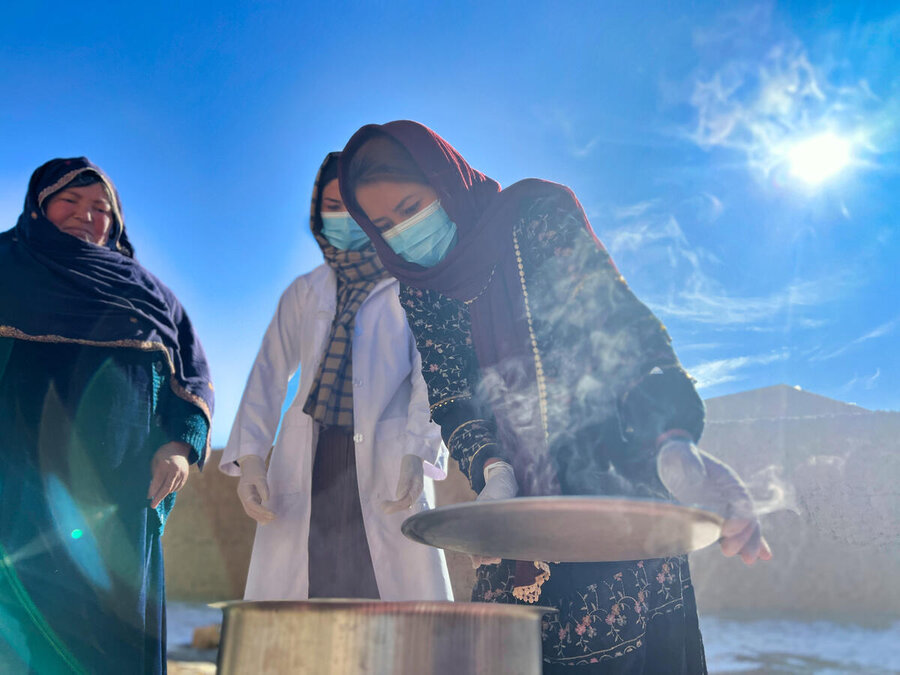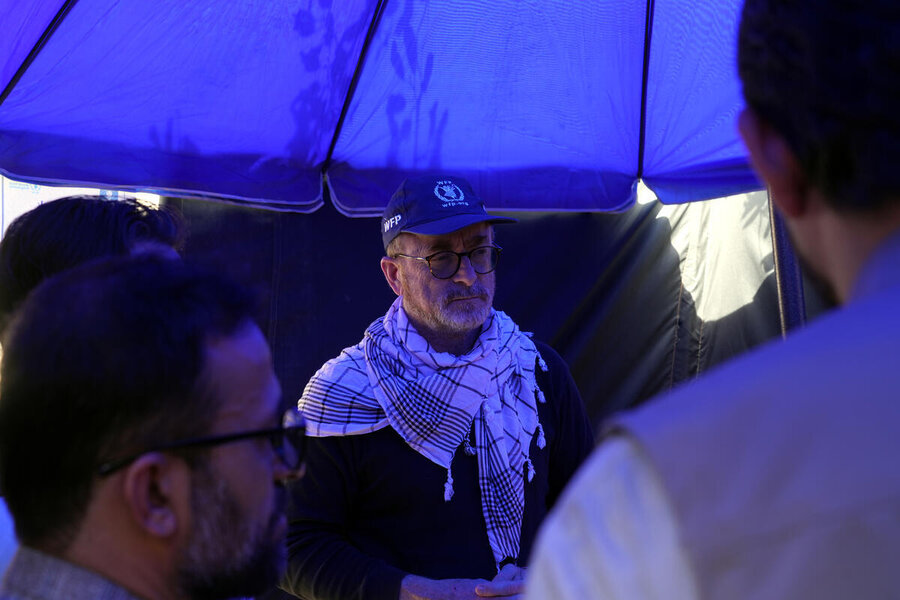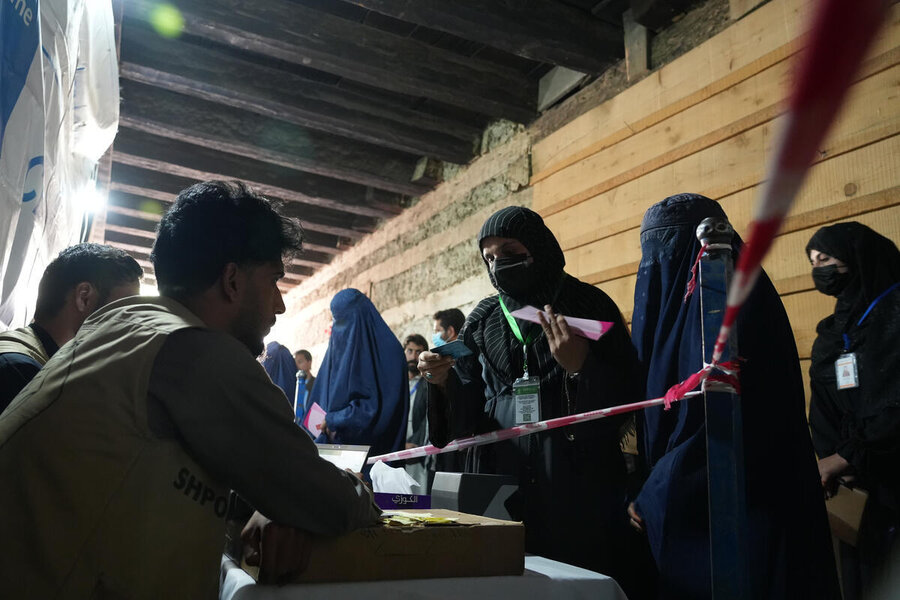Q&A: How Afghanistan’s hunger and nutrition crisis is affecting families, women and girls

As hunger tightens its grip across Afghanistan amid swingeing cuts to funding and resources, women are bearing the brunt of a crisis that shows no sign of letting up. From soaring rates of malnutrition to shrinking food assistance, the situation is becoming increasingly desperate, especially for mothers and their children.
According to the latest IPC (the Integrated Food Security Phase Classification – the global standard for measuring food insecurity), one in five Afghans requires emergency food assistance for survival.
In the Q&A below, Harald Mannhardt, Deputy Country Director for the World Food Programme (WFP) in Kabul, lays out what the latest cuts mean for Afghan families already hanging by a thread.
Q: How many people in Afghanistan are currently facing severe hunger?
Harald Mannhardt: Without the support of WFP and its partners, around 15 million people face severe hunger in Afghanistan today. Already, WFP can reach only a third of those in need – and that number is shrinking. Cuts this year mean that only 1 million out of the 3 million people classified as ‘emergency level’ food insecure (IPC Phase 4) can be assisted.
That’s a two-thirds gap – and it’s widening.

What’s happening with nutrition support in Afghanistan right now?
HM: In May, 280,000 people were dropped from WFP’s programme to treat malnutrition. As of this month, assistance to 1.1 million pregnant and breastfeeding women and under-5 children will be cut entirely. So just when we should be scaling up nutrition work – treating malnutrition, preventing famine – we’re doing the opposite.
How did we get here?
HM: In 2023, WFP had to cut emergency assistance to 10 million people. At the same time, malnutrition soared to record levels. This year, we’re unable to treat half a million malnourished women and children – even though 3.5 million children are projected to be malnourished, and 1.3 million mothers and young children urgently need nutritional support.
How does this impact women and girls specifically?
HM: The effects are devastating. Women and girls in Afghanistan face increasingly harsh restrictions – barred, as they are, from most work, education, and public life. That compounds their economic vulnerability.
Two-thirds of female-headed households cannot afford a basic diet – nearly 20 percent higher than their male-headed counterparts. For many women, survival now hinges on dangerous coping strategies such as appealing for cash handouts or agreeing to early marriages for their daughters.

Are women still able to access aid directly?
HM: Yes – and that matters. Despite restrictions, 98 percent of women in eligible households collect their assistance in person, including widows. In a context where women are being pushed out of sight, this shows remarkable agency.
What else is WFP doing to support women?
HM: WFP is one of the few actors that has been able to offer women safe spaces through skills training and livelihoods programmes. These allow women not only to earn income but also to gather, learn and support each other. Now, those activities are also at risk due to funding cuts.

How many did we support last year?
HM: WFP reached nearly 10 million women and children, including 1 million mothers and 1.4 million children treated for malnutrition in 2024. Now with fewer resources, even the most basic support is under threat.
How are communities responding to these reductions?
HM: It’s painful. When only 10 households in a village can be enrolled, while the entire community is hungry, tensions rise. Even those who receive food feel guilty, knowing others like them are left out.
Prioritization used to be a technical conversation. Now it’s everything. And the margins are razor-thin. One extra can of beans in a cupboard might tip the scales against you – and your family will not be selected for assistance.

Describe what distributions are like
HM: Families are arriving at distribution points en masse, often at dawn, desperate not to miss out. People believe that if they come later, there won’t be anything left. That kind of anxiety only grows when food assistance is visibly shrinking.
“What happens when the food runs out?” they ask.
Is WFP coordinating with other agencies to fill the gaps?
HM: Yes. We work closely with UNICEF and others, particularly around nutrition programming. Field teams coordinate daily. But coordination can only do so much without resources.
We’ve also invested in early warning systems and tech-driven famine prevention strategies, targeting areas most at risk based on live data. Still, without renewed support, our collective ability to prevent catastrophe is limited.
What about long-term solutions – growing food, building resilience?
HM: WFP has invested heavily in resilience programming: training farmers, repairing irrigation systems, building bridges, and offering cash-for-work projects. Such initiatives encourage independence by reducing long-term dependency on aid.
Now, however, they are being cut too. Training sessions are left half-finished, projects stalled. The modest gains made over years risk being undone. For many, it feels like starting from scratch.
What needs to happen now?
HM: WFP needs funding: US$650 million to sustain WFP operations from June to December 2025 – including US$25 million for returnees from Pakistan and Iran; and US$10.5 million to keep the UN Humanitarian Air Service flying to more than 20 destinations – maintaining access to remote places in this way is critical.
In conclusion...
HM: Afghanistan is already a stage for suffering. But it could become far worse. Millions of people need a surge in support now.
